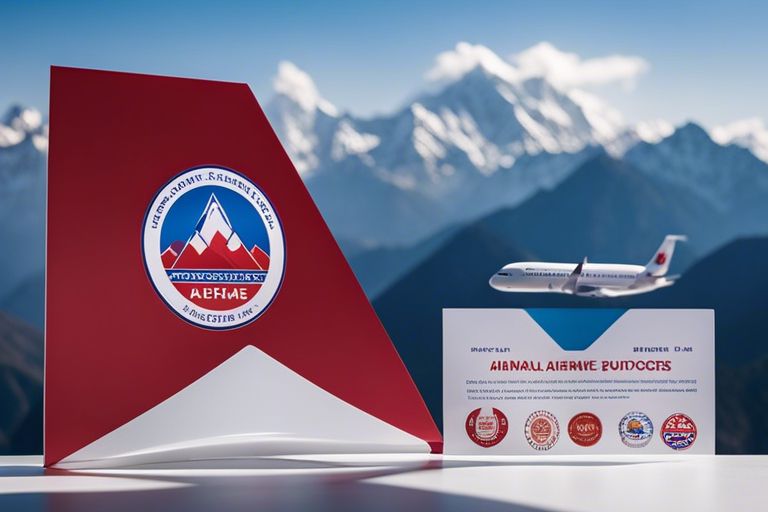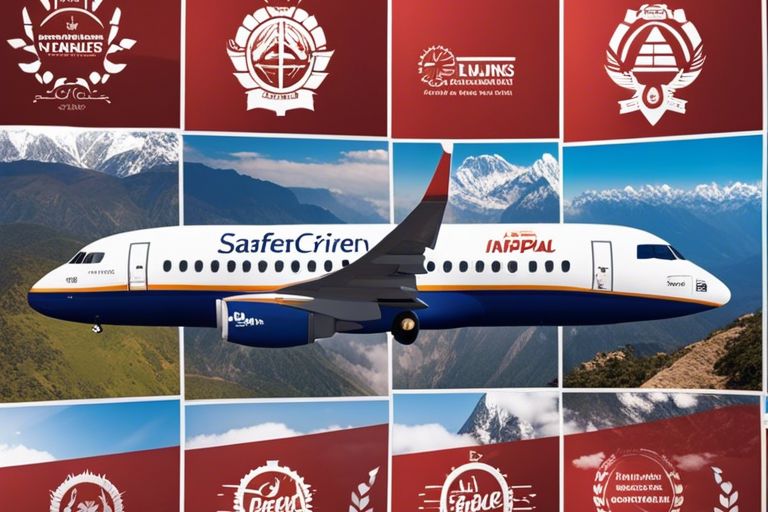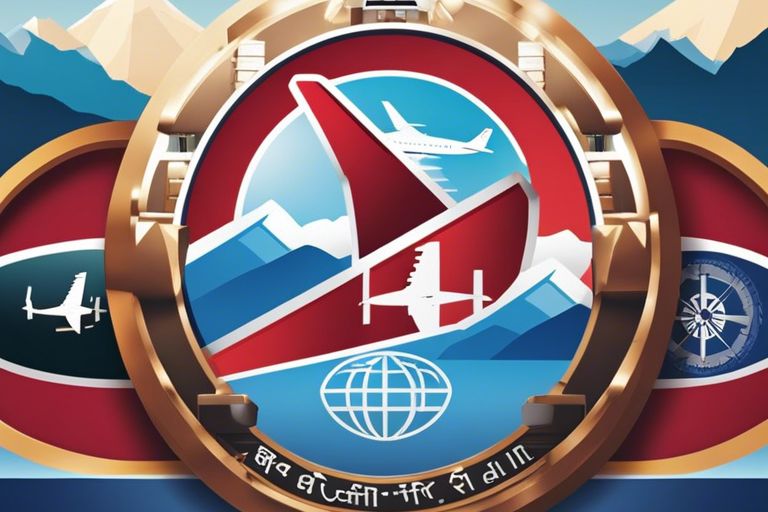Table of Contents
When it comes to air travel in Nepal, safety should be your top priority. With various airlines operating within the country, it can be overwhelming to determine which one is the safest for you to travel with. However, it’s essential to note that airline safety is a critical aspect of your journey, and it’s crucial to choose an airline with a strong safety record. In this blog post, we’ll explore the safety records of different airlines in Nepal, providing you with the necessary information to make an informed decision for your next flight. Whether you’re a frequent flyer or planning your first trip to Nepal, knowing which airline has the best safety record can give you peace of mind as you embark on your journey.
Key Takeaways:
- Nepal Airlines: The national flag carrier, Nepal Airlines, has a good safety record and adheres to international safety standards.
- Yeti Airlines: Yeti Airlines has a strong safety record and operates a modern fleet of aircraft, making it one of the safest options in Nepal.
- Buddha Air: Buddha Air has also maintained a good safety record and has received recognition for its safety standards.
- Regulatory Standards: It is important to note that all airlines in Nepal are regulated by the Civil Aviation Authority of Nepal and must adhere to safety regulations.
- Consider Other Factors: When determining the safest airline in Nepal, it’s important to also consider factors such as maintenance practices, pilot training, and overall safety culture within the airline.
Overview of Nepal’s Aviation Industry
Obviously, when considering the safety of airlines in Nepal, it is important to have an understanding of the country’s aviation industry as a whole. Nepal is a geographically diverse and challenging terrain that presents unique obstacles for airline safety. The country is also heavily reliant on air travel for domestic and international connectivity, making safety a paramount concern for both the government and the public.
The Role of the Civil Aviation Authority of Nepal (CAAN)
The Civil Aviation Authority of Nepal (CAAN) is the regulatory body responsible for overseeing and regulating the aviation industry in Nepal. Its primary role is to ensure the safe operation of airlines and airports in the country. CAAN sets and enforces safety standards, issues licenses, and conducts inspections to ensure compliance with regulations. Additionally, it is responsible for air traffic control, navigation services, and airport operations.
Progress and Challenges
Over the years, Nepal’s aviation industry has made significant progress in terms of safety and infrastructure. The introduction of modern aircraft, improved training for pilots and crew, and upgrades to airport facilities have all contributed to enhancing safety standards. However, the industry continues to face challenges such as difficult terrain, unpredictable weather, and the need for continuous improvement in safety measures. While progress has been made, there are still challenges that need to be addressed to further enhance safety in Nepal’s aviation industry.
Safety Records and Statistics
Assuming you are curious about the safety records and statistics of airlines in Nepal, it’s important to consider the track record of different airlines in the country. According to a blog post by SWOTAH Travel titled Best Domestic Airlines in Nepal, the safety records of airlines can vary based on factors such as fleet age, maintenance procedures, and pilot training. When selecting the safest airline in Nepal, it’s crucial to consider these factors as well as the overall safety standards of the carrier.
Historical Airline Safety Incidents in Nepal
Over the years, Nepal has had its share of airline safety incidents, including accidents and incidents that have raised concerns about the safety and reliability of domestic airlines. These incidents have prompted scrutiny of safety measures and industry regulations, leading to efforts to enhance safety standards and protocols. While some airlines have faced challenges in the past, it’s important to note that these incidents have also led to improvements in safety practices and regulations within the aviation industry.
Current Safety Performance Metrics
When evaluating the safety performance of airlines in Nepal, it’s essential to consider current safety performance metrics such as accident rates, incidents, and compliance with international safety standards. The Civil Aviation Authority of Nepal (CAAN) and other regulatory bodies continuously monitor and evaluate the safety performance of airlines, ensuring that they adhere to strict safety regulations and standards. You can also look into safety ratings and audits conducted by international aviation organizations to gauge the safety performance of airlines in Nepal and make an informed decision about which carrier to choose for your travels.

Evaluation of Nepalese Airlines
Despite a turbulent history of air travel safety, Nepalese airlines have made significant strides in improving their safety standards in recent years. When evaluating the safety of Nepalese airlines, there are specific factors to consider.
Safety Audits and Certifications
When evaluating the safety of Nepalese airlines, it is essential to look at the safety audits and certifications they have obtained. Reputable airlines in Nepal undergo stringent safety audits and hold certifications from international aviation regulatory bodies such as the International Air Transport Association (IATA) and the International Civil Aviation Organization (ICAO). These certifications demonstrate that the airlines have met high safety standards and are committed to ensuring the safety of their passengers.
Comparative Analysis of Major Airlines
When assessing the safety of Nepalese airlines, it is beneficial to conduct a comparative analysis of the major airlines operating in the region. You can compare their safety records, fleet size, maintenance practices, and incident history. Here is a comparative analysis that highlights the safety records of the major Nepalese airlines:
| Airline | Safety Record |
| Yeti Airlines | Has had a few minor incidents in the past 10 years |
| Buddha Air | One of the safest airlines in Nepal with an excellent safety record |
| Simrik Airlines | Has had some safety issues but has taken significant steps to improve safety standards |
When choosing a Nepalese airline for your travel, it is crucial to consider the safety records and measures taken by each airline to ensure your safety during the journey.

Additional Safety Considerations
Now that you have considered the track record and safety practices of airlines in Nepal, there are additional safety considerations to keep in mind. These factors can further influence the safety of your flight and help you make an informed decision when choosing an airline for your travel.
Impact of Geographical Factors
When it comes to air travel, the geographical factors of a region can play a significant role in airline safety. Nepal’s challenging terrain, with its mountainous landscape and unpredictable weather patterns, can pose unique challenges for airlines. Factors such as high altitude airports, strong winds, and monsoon weather can impact flight operations and safety. High altitude and challenging landing conditions require well-trained pilots and specialized aircraft, while unpredictable weather can lead to flight delays and cancellations. When considering the safety of an airline in Nepal, it’s essential to take into account the geographical factors that can affect their operations.
- High altitude and challenging landing conditions
- Unpredictable weather patterns
- Flight delays and cancellations
Knowing how these geographical factors can impact airline safety will help you make an informed decision when choosing an airline for your travel to Nepal.
Role of International Safety Agencies
When evaluating the safety of airlines in Nepal, it’s important to consider the role of international safety agencies. Organizations such as the International Civil Aviation Organization (ICAO) and the International Air Transport Association (IATA) play a crucial role in setting global safety standards and regulations for airlines. They conduct safety assessments and provide resources to help ensure that airlines comply with international safety guidelines. In addition, being a member of these organizations can demonstrate an airline’s commitment to upholding high safety standards and best practices in the industry. Consider looking into an airline’s affiliation with international safety agencies as part of your safety assessment when planning your travel to Nepal.
FAQ
Q: Which airlines are considered the safest in Nepal?
A: Nepal Airlines and Yeti Airlines are considered the safest airlines in Nepal. They have a strong safety record and prioritize the well-being of their passengers and crew.
Q: What safety measures do these airlines follow to ensure a safe travel experience?
A: Both Nepal Airlines and Yeti Airlines adhere to strict safety regulations set by the Civil Aviation Authority of Nepal. They conduct regular maintenance checks on their aircraft, provide ongoing training for their pilots and crew, and prioritize safety protocols to ensure a safe travel experience for all passengers.
Q: How can passengers ensure their own safety when flying with these airlines?
A: Passengers can ensure their own safety when flying with Nepal Airlines and Yeti Airlines by following all safety instructions provided by the crew, wearing their seatbelts during the flight, and adhering to any safety regulations or guidelines set by the airlines. It’s also recommended to stay informed about any travel advisories or updates from the airlines themselves for a safe and smooth journey.

